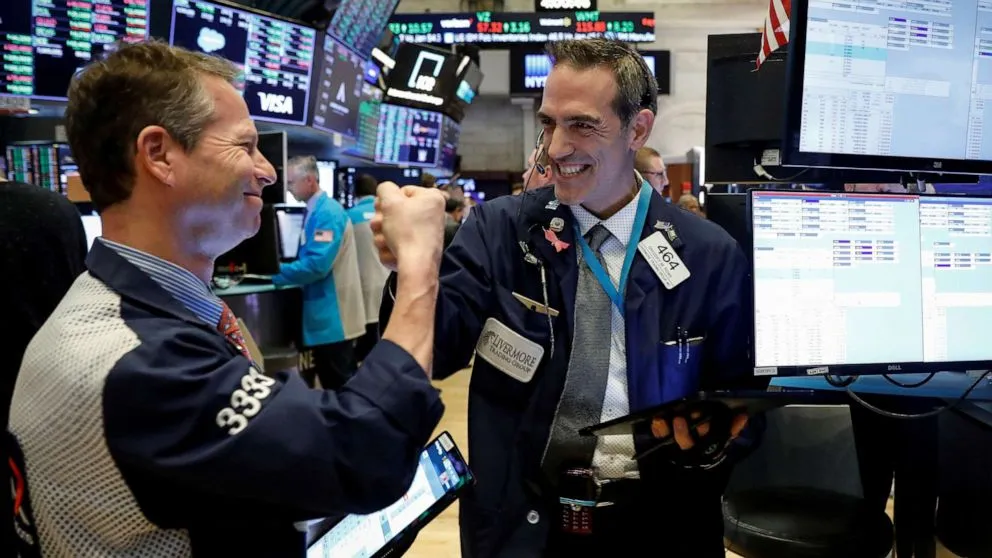The yield on the 10-year U.S. Treasury hovered near the 4% mark on Tuesday, as investors awaited the Federal Reserve’s upcoming interest rate decision. The benchmark 10-year Treasury yield edged slightly lower, slipping less than one basis point to 3.993%. Meanwhile, the 2-year Treasury yield inched up by more than one basis point to 3.508%, and the 30-year bond yield eased by over a basis point to 4.557%. (For context, a single basis point equals 0.01%, and bond yields move inversely to prices.)
Investors are turning their attention to the start of the Fed’s two-day policy meeting on Tuesday, with markets broadly expecting another rate cut. According to the CME FedWatch Tool, traders are pricing in a 98% probability that the overnight federal funds rate will be reduced to a range of 3.75% to 4.00%, down from the current 4.00% to 4.25%.
“Although economic data has been limited because of the ongoing government shutdown, the latest CPI report came in softer than anticipated, and the recent slowdown in hiring strengthens the case for another rate cut,” said Paul Stanley, Chief Investment Officer at Granite Bay Wealth Management.
Following the Fed’s announcement, Chair Jerome Powell’s remarks will be under close scrutiny for insights into the central bank’s stance heading into the final months of the year. Markets are eager to know whether policymakers will signal another cut at their December meeting.
“An October rate cut appears almost certain,” Stanley noted. “However, the probability of a December cut remains less clear. With six weeks until that meeting, the Fed may prefer to adopt a wait-and-see approach before taking further action. Wednesday’s rate cut is practically guaranteed, but a December move is still up for debate.”
The U.S. government shutdown reached its 28th day on Tuesday, creating what some analysts call an “economic data blackout.” Still, investors received a few key updates. Preliminary data from ADP indicated that private-sector employers added nearly 15,000 jobs per week over the past month, rebounding from the job losses recorded in September.
However, consumer sentiment showed weakness. The latest consumer confidence index dropped to its lowest level since April, reflecting a mix of economic uncertainty and cautious spending behavior among households.
“With limited data available, markets are relying heavily on existing assumptions,” said Willy Walker, Chairman and CEO at Walker & Dunlop. “We expect the short end of the yield curve to flatten slightly as investors price in the Fed’s cautious approach, while the long end remains driven by inflation and growth expectations. Historically, these yield curve shifts tend to be temporary unless the shutdown drags on for much longer.”
The lack of timely economic indicators has left investors more dependent on Federal Reserve communication and private-sector data to gauge the health of the U.S. economy.
Adding another layer of anticipation, U.S. President Donald Trump and Chinese President Xi Jinping are scheduled to meet Thursday in South Korea. Reports suggest that negotiators from both sides have agreed on the framework of a potential trade deal, raising hopes that tensions between the two largest economies could ease further.
Markets have been sensitive to any signs of progress on trade, with optimism around a resolution helping to stabilize equities and support risk appetite in recent sessions. A breakthrough could provide a significant boost to global growth sentiment at a time when investors are closely watching the Fed’s next move.
The combination of a likely rate cut, limited economic data, and renewed trade optimism has created a complex backdrop for bond markets. While short-term yields reflect near-term policy expectations, longer-term rates remain anchored by broader concerns over inflation, growth, and fiscal uncertainty stemming from the government shutdown.
For now, the market’s attention is squarely on the Federal Reserve. Investors will be watching to see not only if policymakers deliver another rate cut but also how Chair Powell frames the decision especially regarding future moves before year-end.
If the Fed signals continued flexibility while maintaining confidence in the broader economy, bond yields could stabilize around current levels. But if Powell hints at a more cautious stance or points to persistent economic headwinds, traders may push yields lower as expectations for additional easing grow.
With major geopolitical and policy events converging this week, investors are entering a period that could shape the trajectory of Treasury yields and the broader markets — heading into the final stretch of the year.

Subscribe to our newsletter!
As a leading independent research provider, TradeAlgo keeps you connected from anywhere.








